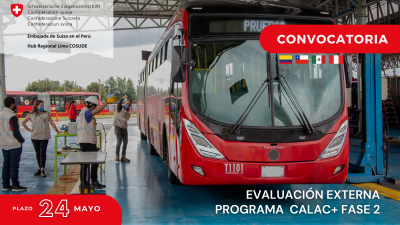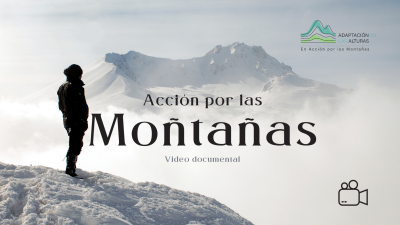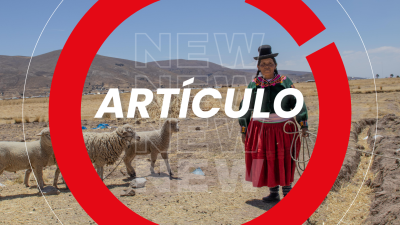At the event entitled “Renacer en los Andes” (Revival in the Andes), the successful experiences of over four thousand farming families in the high Andes of Cusco in Apurimac to tackle climate change were presented in the framework of the Adaptation to Climate Change Programme (PACC) – Phase II.
| From left to right: Bautista Ramírez, former Yachachiq de HakuWiñay / Noa Jayatai in Cotaruse (Apuimac); Álvaro José Velezmoro, Executive Director (e) and National Director of Coordination and Plans of the National Centre of Strategic Planning; Elsa Galarza, Minister of Environment; Hans Ruedi Bortis, Swiss Ambassador to Peru; Cayetana Aljovín, Minister of Development and Social Inclusion, Pablo Benjamín Quijandría, Deputy Minister of Agricultural Policies at the Ministry of Agriculture; Martin Jaggi, Director of Cooperation at Swiss Cooperation (SDC); Gumercindo Crispin, Yachachiq HakuWiñay / Noa Jayatai in Ocongate (Cusco) |
Climate change today is the greatest challenge facing humanity, and adaptation to climate change is the greatest for development. And in Peru, it is the rural communities that are the most vulnerable to the conditions of a changing climate. Over the last eight years, some 4,000 farming families living in poverty in the high-Andean micro river basins of Huacrahuacho (Cusco region) and Mollebamba (Apurimac region) have improved their management of natural resources and their productive systems, thanks to the implementation of the Climate Change Adaptation Programme (PACC) in alliance with partners in Peru.
The closing ceremony was held on 30 May, at the residence of the Swiss Ambassador, entitled “El Renacer de los Andes”, and was an opportunity to present the PACC Peru Project with its team work and multi-level and inter-institutional focus. Stitching together the capacities and efforts of local governments, regional governments, national entities and academic institutions like San Antonio Abad University at Cusco and Micaela Bastidas University at Apurimac together with civil society organisations, with the technical and financial support of Swiss Cooperation (SDC), they achieved considerable impact in the Cusco and Apurimac regions.
Let us learn more about the contribution of PACC Peru, through the accounts of those involved in the work, hand in hand with Swiss Cooperation, over the eight years of the project.
| Video |
Policy advocacy and scale impact for adaptation to climate change
With the following info graph, the product of the independent evaluation carried out on the PACC Peru project, let us learn more about the evolution of the project, the results obtained, and 10 low-cost, efficient solutions for adapting to climate change in which the private sector and local governments could invest.
| Click on the image to see the whole info graph |
 |
The PACC project was an initiative of the bilateral cooperation between the Ministry of the Environment and the Swiss Agency for Development and Cooperation (SDC), which, in its second phase, extended its collaboration to the Cooperation for Social Development Fund (FONCODES), via the HakuWiñay Project (Mi Chacra Emprendedora). To move ahead, the PACC project brought together the regional governments of Cusco and Apurimac, and the Ministries of the Environment, Agriculture and Development and Social Inclusion. The state universities San Antonio Abad (Cusco) and Micaela Bastidas (in Abancay) played an active part.
For further information:
PACC Peru project, Fact sheet, Swiss Embassy, Swiss Agency for Development and Cooperation (SDC)
Publicaction YachayRuwanapaq
Related links:
Special In El Comercio newspaper– Día del Campesino (Day of the Peasant Farmer)
Report In Somos Magazine–El Comercio Group
News / Graphic Portfolio in El Comercio Web
News On Ñuqanchik Programme – TV Perú
Article Opinión in El Comercio newspaper
News On Environment Ministry Webpage
News On TV Perú
News In Agencia Andina
Report of event: Swiss Cooperation Webpage








